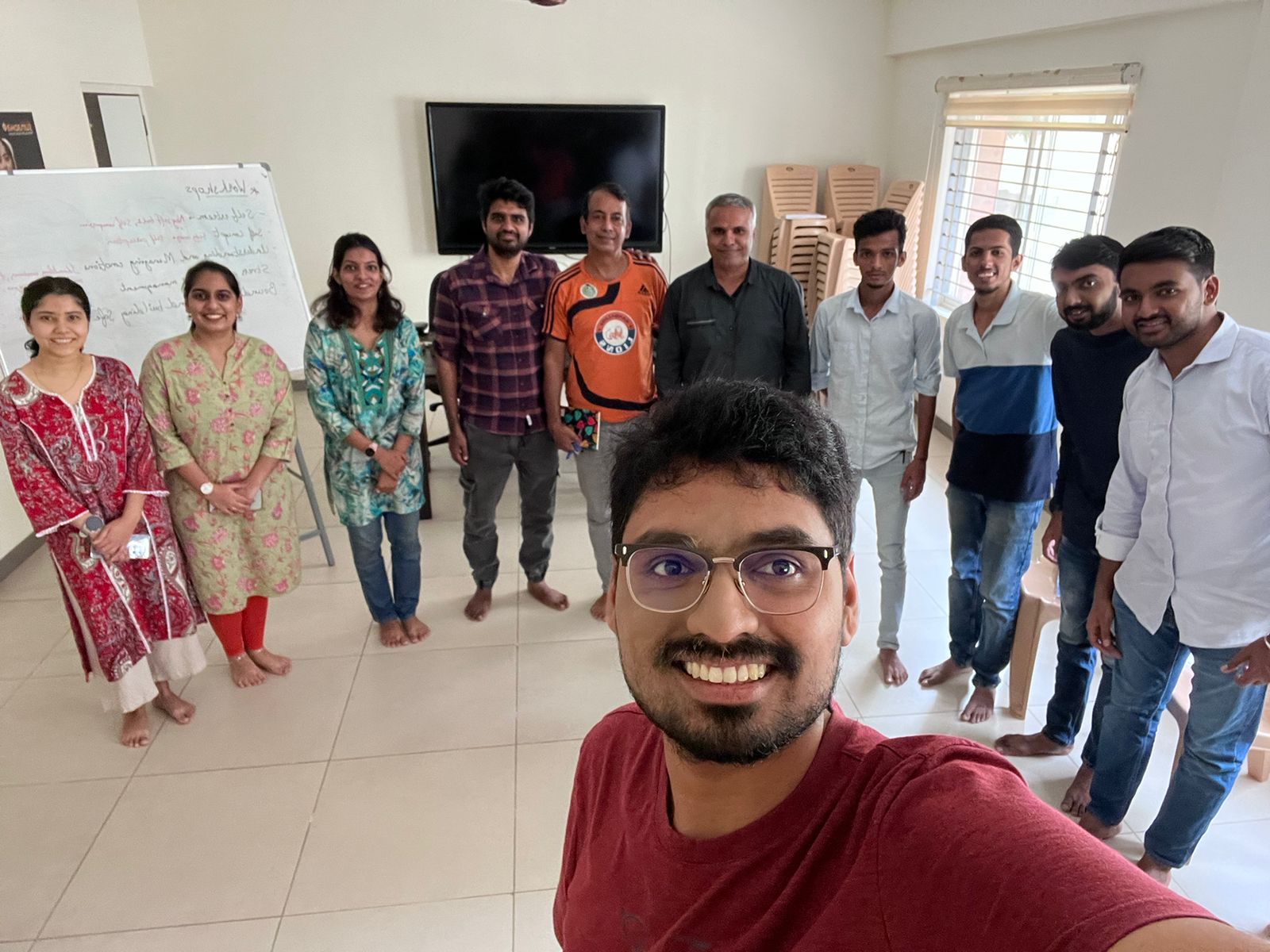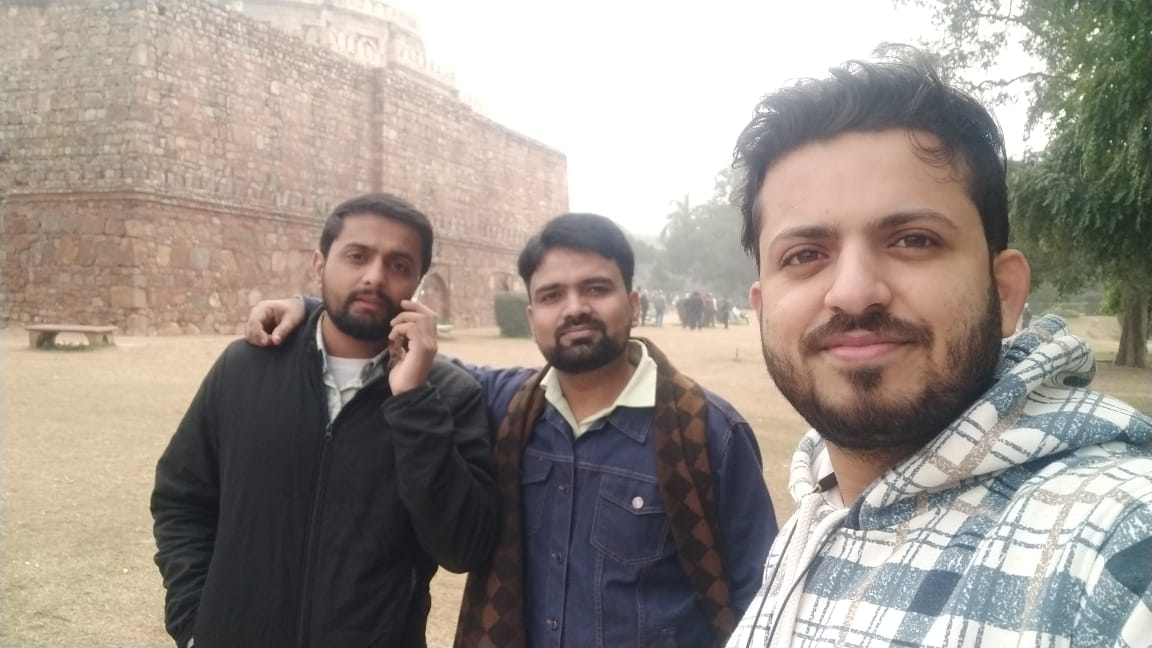 Vipassana! We have been hearing and reading about it a lot on this space. There were testimonials about how Vipassana has helped people (PWS and others). Dr. Sachin has been vehemently stressing on its benefits too. All this led me to find out more about it. And I stumbled upon the “Goa Vipassana Samiti”. On inquiry, they were generous enough to share a lot of reading matter about Vipassana. With that as a reference, I hereby present a short write-up for other readers to give a brief overview and idea about what Vipassana is all about. What is Vipassana? Basically, Vipassana is a kind of Meditation, infact more. It’s different. It has it’s origins in India, but was long lost to humanity, until Gautam Buddha rediscovered it, 2500 years ago. Vipassana is the art of self-purification and self-observation. In basic terms, it is the art of observing and realizing the truth about one’s own self, by observation. This by direct experience is the process of purification. The entire path is called “Dhamma”. The definition may sound too spiritual for us to understand. So, let me attempt to make it simple as you read further. Not Just Meditation How is Vipassana different? The definition speaks about self-observation and self-realization. How does it happen? The basic lesson tells us to sit down for meditation, close your eyes, close your mouth, and do nothing at the physical and vocal level. Just observe your self as you medidate. What do you mean by observe yourself? The first thing we observe is our breath. We start observing it as it is. Other meditation techniques speak about controlling the breath (as in case of Pranayam). But here, you observe the breath as it is. You breathe heavy or shallow, slow or fast. Just observe it the way it is. In ancient India, this state was called “Tatastha”, which means somebody sitting at the bank of the river. He just sits at the bank of the river, and just observes the river- its natural flow. Be it fast, or slow, the water might be clear or muddy. Whatever it is, he doesn’t try his bit to change it. He just observes it. This analogy helps in understanding the crux of this wonderful concept. Another thing that conventional meditation teaches us is to recite (in mind) a mantra (or Namasmaran) or visualization of “OM” to attain concentration. Vipassana technique abstains from such vocal recitations or visualizations. Mantras or Namasmaran helps in attaining concentration- but that’s not the goal of Vipassana. Concentration with purity is the aim. The self-observation thus starts from an elementary thing as breathing. But further as we learn this technique more, we learn to observe the changes happening within us (Bio-chemical and electro-chemical reactions) during various emotions like anger, fear, hatred, jealousy, tension, stress, anxiety, frustration, agitation, sadness, greed, sorrow and grief. Realizing the changes help us in the way we react to such situations. And thus, with constant practice, one attains a mental state that is mainly calm, peaceful, happy, positive, focused, hopeful, loving, compassionate, kind and joyful. A Word of Caution Before taking the leap, one should know that vipassana involves a very strict code of conduct during the 10-day course, and it is highly essential for the best benefits. Some of the precepts that student has to follow are, to abstain from killing any living creature during the course, to abstain from any physical contact from any other person, to abstain from talking to anybody, to abstain from eating after mid-day meals, no listening to music and so on. The bottom line is that, the course has to be performed in total seclusion, by having no contact with the outside world. A student has to be ready to closely follow this code of conduct before venturing into this technique. Vipassana and Stammering How does it help stammering? As you must have read, Vipassana aims at curbing all the negativities of life such as – anger, fear, hatred, jealousy, tension, stress, anxiety, frustration, agitation, sadness, greed, sorrow and grief. All these emotions are in a way or the other part of the stammering ice-berg, which grows bigger with all the things a PWS goes through. With Vipassana, we can learn a way to realize the way we react to different situations, because of our speech, and the reactions of the society. It’s the aftermaths that are a bigger problem, rather then the stammering itself. I hope this ‘rather long’ write up has answered a few questions about the techniques of Vipassana. My heartfelt thanks to Mario and Muriel of Goa Vipassana Samiti, for giving me access to such valuable and useful piece of information.
Vipassana! We have been hearing and reading about it a lot on this space. There were testimonials about how Vipassana has helped people (PWS and others). Dr. Sachin has been vehemently stressing on its benefits too. All this led me to find out more about it. And I stumbled upon the “Goa Vipassana Samiti”. On inquiry, they were generous enough to share a lot of reading matter about Vipassana. With that as a reference, I hereby present a short write-up for other readers to give a brief overview and idea about what Vipassana is all about. What is Vipassana? Basically, Vipassana is a kind of Meditation, infact more. It’s different. It has it’s origins in India, but was long lost to humanity, until Gautam Buddha rediscovered it, 2500 years ago. Vipassana is the art of self-purification and self-observation. In basic terms, it is the art of observing and realizing the truth about one’s own self, by observation. This by direct experience is the process of purification. The entire path is called “Dhamma”. The definition may sound too spiritual for us to understand. So, let me attempt to make it simple as you read further. Not Just Meditation How is Vipassana different? The definition speaks about self-observation and self-realization. How does it happen? The basic lesson tells us to sit down for meditation, close your eyes, close your mouth, and do nothing at the physical and vocal level. Just observe your self as you medidate. What do you mean by observe yourself? The first thing we observe is our breath. We start observing it as it is. Other meditation techniques speak about controlling the breath (as in case of Pranayam). But here, you observe the breath as it is. You breathe heavy or shallow, slow or fast. Just observe it the way it is. In ancient India, this state was called “Tatastha”, which means somebody sitting at the bank of the river. He just sits at the bank of the river, and just observes the river- its natural flow. Be it fast, or slow, the water might be clear or muddy. Whatever it is, he doesn’t try his bit to change it. He just observes it. This analogy helps in understanding the crux of this wonderful concept. Another thing that conventional meditation teaches us is to recite (in mind) a mantra (or Namasmaran) or visualization of “OM” to attain concentration. Vipassana technique abstains from such vocal recitations or visualizations. Mantras or Namasmaran helps in attaining concentration- but that’s not the goal of Vipassana. Concentration with purity is the aim. The self-observation thus starts from an elementary thing as breathing. But further as we learn this technique more, we learn to observe the changes happening within us (Bio-chemical and electro-chemical reactions) during various emotions like anger, fear, hatred, jealousy, tension, stress, anxiety, frustration, agitation, sadness, greed, sorrow and grief. Realizing the changes help us in the way we react to such situations. And thus, with constant practice, one attains a mental state that is mainly calm, peaceful, happy, positive, focused, hopeful, loving, compassionate, kind and joyful. A Word of Caution Before taking the leap, one should know that vipassana involves a very strict code of conduct during the 10-day course, and it is highly essential for the best benefits. Some of the precepts that student has to follow are, to abstain from killing any living creature during the course, to abstain from any physical contact from any other person, to abstain from talking to anybody, to abstain from eating after mid-day meals, no listening to music and so on. The bottom line is that, the course has to be performed in total seclusion, by having no contact with the outside world. A student has to be ready to closely follow this code of conduct before venturing into this technique. Vipassana and Stammering How does it help stammering? As you must have read, Vipassana aims at curbing all the negativities of life such as – anger, fear, hatred, jealousy, tension, stress, anxiety, frustration, agitation, sadness, greed, sorrow and grief. All these emotions are in a way or the other part of the stammering ice-berg, which grows bigger with all the things a PWS goes through. With Vipassana, we can learn a way to realize the way we react to different situations, because of our speech, and the reactions of the society. It’s the aftermaths that are a bigger problem, rather then the stammering itself. I hope this ‘rather long’ write up has answered a few questions about the techniques of Vipassana. My heartfelt thanks to Mario and Muriel of Goa Vipassana Samiti, for giving me access to such valuable and useful piece of information.




 As we earlier decided meeting time at 09:30 AM...
As we earlier decided meeting time at 09:30 AM...
5 thoughts on “Vipassana – Towards Fluency of Mind”
Sachin
(May 16, 2010 - 1:30 pm)Thanks Harish! I was hoping that someone would write a little bit about Vipassana. Great Job. Vipassana as a technique of observing our own mind and dealing with it- has been well tested- for thousands of years! The people who promote it are doing it not for money or personal fame- Just for the love of serving others- another reason why I will strongly recommend it. But, as you rightly say- it needs a high level of discipline. But even fluency shaping techniques demand high self discipline for long periods- and yet fail to go to the root of the problem.
I hope readers who have undergone Vipassana, Brahmavidya or any such psycho-spiritual discipline from any culture will share their thoughts and encourage others..
rahul
(May 16, 2010 - 4:09 pm)thanx harish, for sharing this techniques…..and sachin sir,
we would like to learn some basic vipassana techniques at 3rd tisa workshop.
admin
(May 17, 2010 - 6:20 am)Thanks a ton Harish for sharing. And if some of us think we can't take leaves for 10 days for this course. We can do it right where we are. Stop Reading newspapers, stop watching TV for a few days. Switch off you cell phone for few hours. Go on a solo one day trek and so on…Happy Vipassana
admin
(May 17, 2010 - 6:34 am)Thanks harish for this write up. Things like this which bring about more awareness not only help in dealing with stuttering but improves other aspects of the life too. Lets get into some action!
SUPERSANDESH
(May 28, 2010 - 12:28 pm)i agree with sachin sir ! and thanks harish for sharing this information with our friends ! ……… take care !
Comments are closed.